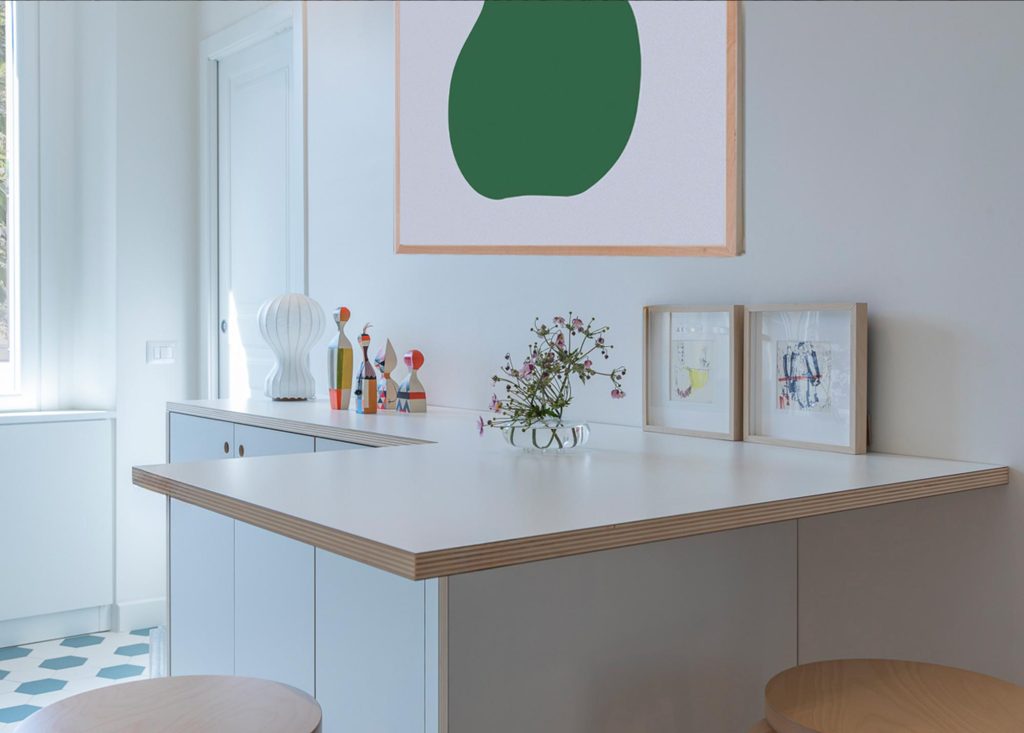The highest class of the Finnish building materials emission classification provides designers with a reliable way to identify low-emission laminates. This certification indicates that the product has passed stringent emission tests to ensure that the material does not release significant amounts of harmful compounds into indoor air. Low-emission laminates are an essential part of a healthy home environment, making the certificate an important selection criterion when sourcing building materials.
What does the M1 certificate say about laminates?
The Finnish emission classification for building materials divides products into three categories, of which M1 represents the materials that meet the most stringent criteria. When a laminate has this certification, it meets the strict requirements for emissions and cleanliness of materials recognised by the construction industry.
The certificate ensures that the laminate does not release significant amounts of harmful chemical compounds into indoor air. The test measures the levels of VOCs (volatile organic compounds), formaldehyde, ammonia, carcinogens and the odour of the product.
The emission classification of building materials is of particular relevance to health, as we spend most of our time indoors. Certified products help create a healthier indoor environment and are particularly important for people with allergies, asthma and other air quality sensitivities.
How does M1 certification affect indoor air quality?
M1 certified laminates make a significant contribution to indoor air quality in the home by reducing the amount of harmful chemicals in the air. Conventional laminates can release VOCs and formaldehyde into indoor air, which can cause irritation, headaches, fatigue and, at worst, long-term health problems.
For certified laminates, VOC emissions are strictly limited to a maximum of 0.2 mg/m²h. Formaldehyde emissions are limited to 0.05 mg/m²h, which is significantly lower than many international standards. In addition, materials must not emit ammonia or carcinogenic substances, nor must they produce a disturbing odour.
Building health experts have long stressed that good indoor air quality is an important factor for people's well-being. Research shows that clean indoor air can reduce respiratory symptoms and allergic reactions, as well as improve concentration and general well-being.
This is particularly important in new construction or renovation, where a lot of new materials are installed that can release significant amounts of chemicals in the first few months. M1 certified products minimise this "new house smell" and the associated health risks.
What is the difference between M1 certified and normal laminate?
M1-certified laminates differ from ordinary laminates primarily in terms of the rigorous testing process and emission limits. Conventional laminates may not have undergone as comprehensive emission testing or may not meet the stringent requirements of M1.
In the testing process, emission measurements of M1 laminates are carried out in neutral laboratories under standardised conditions. The test lasts 28 days, during which time the emissions released from the product are measured. Only products that meet the most stringent criteria are certified.
| Feature | M1 certified laminate | Plain laminate |
|---|---|---|
| VOC emissions | Not more than 0,2 mg/m²h | Varies, often higher |
| Formaldehyde emissions | Not more than 0,05 mg/m²h | Varies, not the same restrictions |
| Testing | Standardised 28-day process | Varies by manufacturer |
| Applicability | Particularly good for allergy sufferers and public spaces | Varies by product |
One important difference is also found in in the pricing of laminates. M1 certified products are often slightly more expensive due to stricter manufacturing requirements and testing processes. Despite this, many designers choose a certified product because of the health benefits.
M1-certified laminates are particularly suitable for places where air quality is of particular importance, such as schools, nurseries, hospitals and homes for allergy sufferers. Standard laminates may be suitable for areas where people spend less time or where ventilation is particularly effective.
Main conclusions of the M1 certificate
The M1 certificate is an important tool for ensuring low-emission laminates and promoting healthy indoor air. Certified laminates meet the strictest emission limits in Finland and are a safe choice for all spaces.
When choosing a laminate, you should pay attention to the certificate, especially if:
- There are children, elderly people, people with allergies or asthma in the household
- It is a space where a lot of time is spent
- You want to minimise potential chemical emissions in new construction or renovation
- The aim is to build a holistically healthy indoor environment
When making a purchasing decision, it is worth making M1 certification one of the key selection criteria, alongside colour, texture and price. Healthy indoor air is an investment that pays for itself in terms of comfort and possibly avoided health problems.
Choosing building materials is always a balancing act between many factors, but indoor air quality is not something to compromise on. M1-certified laminates offer a reliable and proven solution that combines functionality, aesthetics and health - all important factors in a home that will provide years of enjoyment.

